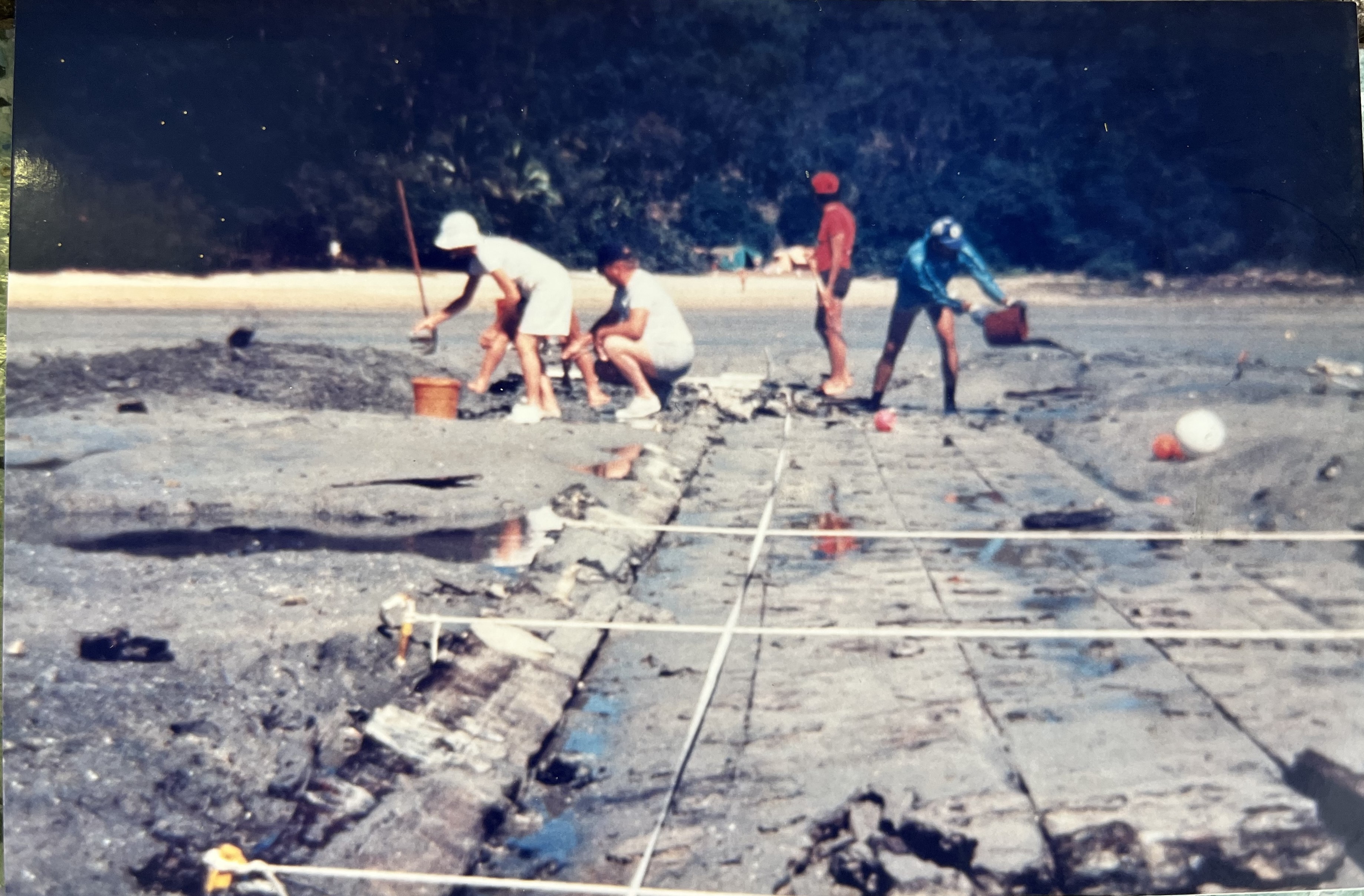


What was referred to by locals as the Happy Bay wreck was a great source of interest and uncertainty for many years – a popular local theory being that it was a Spanish galleon, possibly fanned by the fact that old Spanish coins had been found in the area. Some familiar names involved in trying to identify the wreck were the Altmann family, Walter Tronson and George Sax.
Over the years, as the resort of Happy Bay was being established, several items of wreckage had been carted up to the homestead area and could be easily found around the grounds. Some pieces had been burnt and around the fire could be found hand wrought nails of copper and the sort of iron spikes, preceding the bolts and rivets used by modern-day shipbuilders. Lumps of galley coal and pitch were retrieved from the sands. Fragments of crockery – white China pieces with a blue edging and decorative Chinese motifs – were also found. (Many of the crew of the ‘Valetta” were Chinese). Iron fragments were also found - prominent was an iron box about 37 centimetres square, evidently the step in for a large mast.
In time, most of these wrecked items disappeared and by the time the Mountney family purchased the resort in 1949, all efforts were channelled into upgrading facilities. The wreck became just another item on the list to be checked out. This did not, of course, deter those who occasionally turned up with shovels to dig around the wreck area.
In the early 1970s, during another upgrade, the Galleon Bar was established featuring five cannon balls linked by association to the “mystery galleon of Happy Bay”. Guests were encouraged to “dance the night away with the Buccaneers.” Clearly, the wreck was not forgotten.
By 1978, John Mountney was at the helm of the resort. It was assistant manager, Ian McClintock, who set in motion a chain of events that ultimately solved the mystery of the wreck. He contacted David Hopley at James Cook University regarding “the possibility of radiocarbon dating and wood analysis of some timbers removed from a wreck at Happy Bay.”
Subsequent research by Hopley and McClintock produced a number of references to an occurrence of a wreck at Long Island. After a process of elimination and the discovery of an eyewitness report in the ‘Sydney Gazette” dated September 15, 1825 of “circumstances attending the loss of the ‘Valetta’ in a bay near Cape Gloucester”, both men were certain they had identified the wreck.
The establishment of the Department of Maritime Archaeology of the Queensland Museum in 1981 led to renewed interest in the site which ultimately resulted in the department’s expedition to Happy Bay in 1983 and a thorough examination of the remains.
On June 30 1983, a small article appeared in the “Courier Mail” –
For those who are interested in a comprehensive account of the story of the “Valetta”, this can be found in Ray Blackwood’s book, “The Whitsunday Islands – An Historical Dictionary” – an intriguing read!
Story and photos courtesy of Proserpine Historical Museum, Marion Eaton (nee) Hallam and Qld Museum
The Valetta remains at Happy Bay. Photo credit: Qld Museum
A relic from the Valetta wreck